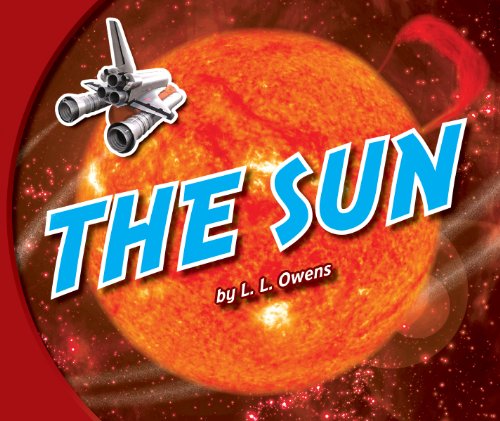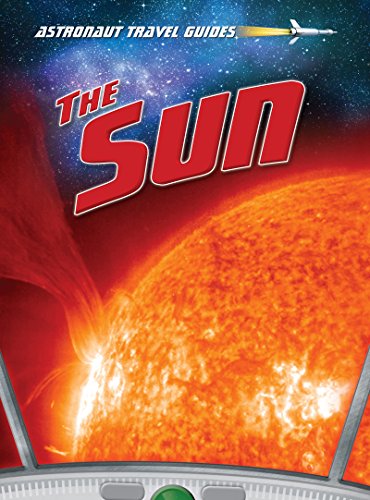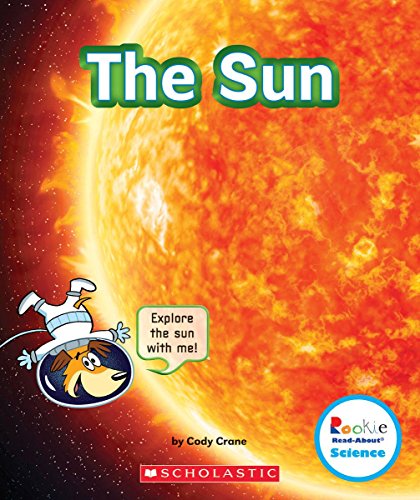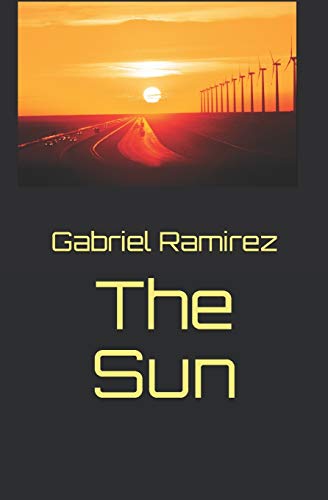-
The Sun
L. L. Owens
language (The Child's World, Inc., Jan. 1, 2014)A basic introduction to the sun, its size, composition, and place within our solar system.
-
The Sun
Nick Hunter
language (Raintree, Nov. 1, 2014)What is the Sun like, and could we ever visit there? Taking the form of an imaginary trip, this book explores the science and history of the Sun, looking at recent studies and possibilities for the future.
-
The Sun
Melanie Chrismer
Paperback (Children's Press, March 1, 2008)Discover the characteristics of the Sun.Scholastic News Nonfiction Readers: Space Science series gives the youngest reader (Ages 6-7) an introduction to Space. Each book includes chapters that help readers identify key details while the photographs, and other text features encourage students to make connections on their own. I
I
-
The Sun
Cody Crane
Paperback (Children's Press, Feb. 1, 2018)Did you know that it would take 20 years to reach the sun in an airplane?The natural world comes alive for young readers (Ages 6-7) with Rookie Read-About "RM" Science! With striking, full-color photos and just the right amount of text, this series immediately involves young readers as they discover intriguing facts about the fascinating world around them.Readers (Ages 6-7) will blast off with Rocket to learn fascinating facts like this-and more-all in the pages of this book. I
I
-
The Sun
Seymour Simon
Paperback (Collins, Sept. 1, 2015)In this completely updated edition of The Sun featuring beautiful full-color photographs, Seymour Simon presents a fascinating introduction to the star that is the center of our Solar System. Young readers will love exploring the wonders of the sun, from the constant nuclear explosions at its core to the sea of boiling gases that forms its surface. This nonfiction picture book is an excellent choice to share during homeschooling, in particular for children ages 6 to 8. It’s a fun way to learn to read and as a supplement for activity books for children.Seymour Simon knows how to explain science to kids and make it fun. He was a teacher for more than twenty years, has written more than 250 books, and has won multiple awards.This book includes an author's note, glossary, and index and supports the Common Core Learning Standards, Next Generation Science Standards, and the Science, Technology, Engineering, and Math (STEM) standards. Q
Q
-
The Sun
Seymour Simon
Paperback (Collins, Oct. 26, 1989)Seymour Simon explores the wonders of the sun, from the constant nuclear explosions at its core to the sea of boiling gases that forms the surface, in this crisp, clear book illustrated with over twenty startling, full-color photographs, The Sun presents a fascinating introduction to the star that is the center of our Solar System and essential to life on Earth. Q
Q
-
The Sun
Gabriel Ramirez
Paperback (Independently published, Dec. 31, 2019)Interesting fact, the sun is terrible at fusion. Think about it, why hasn't the sun just instantly ignited all its fuel, and blow up all the milky way? The limiting factor infusion for the sun is one, heat, and two beta decays. The first you likely knew, but beta decay, "whatchu talking about Willis?" I'm quoting Arnold from one of my favorites shows growing up called different strokes. Well, when you smash two hydrogen atoms together, you get what we call a di-proton. It is sometimes called Helium-two, and boy does it not like existing. Due to the fundamental properties of atomic and subatomic particles, he-two is unstable. Most times, like nearly every time he-two created, the protons break back apart into hydrogen atoms, the party just stops.
-
The Sun
Seymour Simon
eBook (Collins, Sept. 1, 2015)In this completely updated edition of The Sun featuring beautiful full-color photographs, Seymour Simon presents a fascinating introduction to the star that is the center of our Solar System. Young readers will love exploring the wonders of the sun, from the constant nuclear explosions at its core to the sea of boiling gases that forms its surface. This nonfiction picture book is an excellent choice to share during homeschooling, in particular for children ages 6 to 8. It’s a fun way to learn to read and as a supplement for activity books for children.Seymour Simon knows how to explain science to kids and make it fun. He was a teacher for more than twenty years, has written more than 250 books, and has won multiple awards.This book includes an author's note, glossary, and index and supports the Common Core Learning Standards, Next Generation Science Standards, and the Science, Technology, Engineering, and Math (STEM) standards. Q
Q
-
The Sun
Linnea Wästberg, Anastasiia Benzel
Paperback (Independently published, Oct. 25, 2019)Explore the wonders of our world in "The Sun" rhyming picture book. Hopes and Dreams is part of the "U n I - verse" series, capturing the everyday magic in life. "U n I - verse" explores the magic of our Gaia; mind, body and spirit; and seasons and elements. Because it's cool to care. It's daring to dream. And because loving is lifesaving. "The big golden sun is magically unique. Without it, our world wouldn't be complete". www.littlemagicminds.com
-
Sun, The
Betsy Rathburn
Library Binding (Bellwether Media, Aug. 1, 2018)The Suns outermost layer, the corona, is only visible to the naked eye during a total solar eclipse! This important star impacts our daily lives, from providing the necessities of life to affecting our means of communication. Studying the Sun provides information about the galaxy and beyond. This title is one shining star young readers will not want to put down! Opening narratives place readers in the role of a NASA scientist. Fun facts offer bonus information of extremely high interest. Topic-specific infographics highlight further learning for high interest or difficult to grasp concepts. N
N

